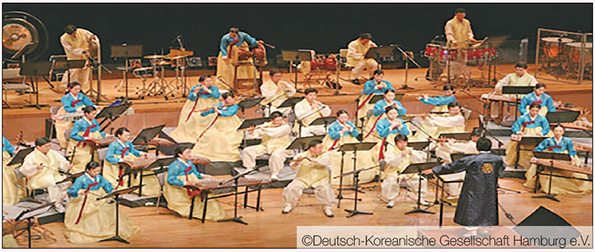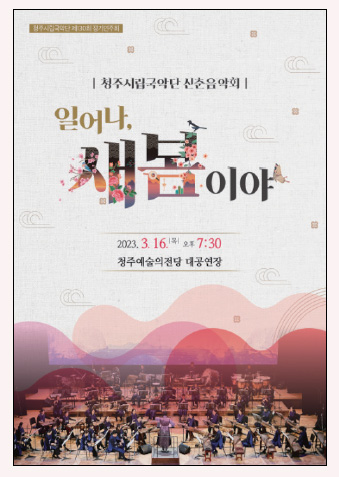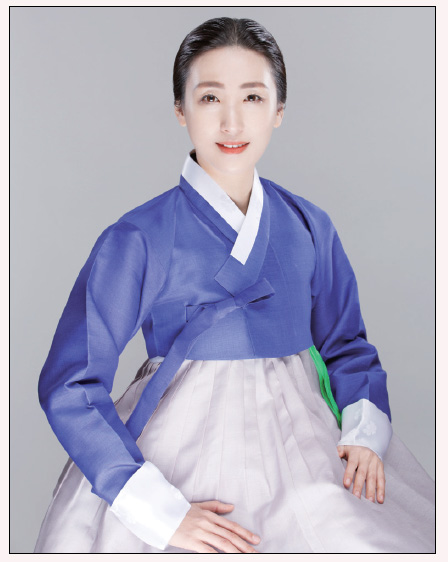
Blackpink’s Pink Venom, Stray Kids’ Thunderous, Leenalchi’s Tiger is coming, and Agust D’s Daechwita, what do these share in common? It is the use of traditional Korean musical instruments in their songs. Pink Venom has a low rhythm unique to the Geomungo Zither, Thunderous uses Samulnori instrumental music played with Gongs, Jing, Janggu, and Buk drums, and Pansori, which is said to have a calming effect, a vocal sound (Chang), Aniri (words), and Neoreumsae (gestures) to the beat of a drum. Daechwita captivated listeners from around the world with an unusual combination of tradition and K-pop, using Taepyeongso, Nabal, Nagak, and Yonggo. Thanks to its unique harmony with K-pop, Korean traditional music and instruments is also receiving a lot of attention. Last year, in Egypt, a traditional Korean music class was held at the Arab Music Center as part of cultural exchange, and in Germany, the National Gugak Center’s Jongmyo Jeryeak (Royal Ancestral Ritual Music in the Jongmyo Shrine) tour was successfully completed in celebration of the 50th anniversary of the Korea-Germany Cultural Agreement. In this article, CBT reporters would like to introduce ways to learn about, and experience traditional music and traditional musical instruments.
Traditional music branch

Traditional Korean music is called Gugak, and the National Gugak Center divides traditional music into Jeongak, folk music, and creative music.
Jeongak can be subdivided into court music and scholars’ pungnyu (; a stylish and tasteful thing or play like that) music. Court music includes ancestral rites centered on the Jongmyo ancestral rites, ceremonial music played during assemblies or banquets, and royal court music played when the king is on his way. The instruments used in court music are made of eight materials representing the basic substances of all things, such as iron, stone, string, bamboo, wood, leather, gourd, and soil. This is based on Confucian thought, and each instrument is arranged according to the five elements of Yin and Yang. Jongmyo Jeryeak and Daechwita correspond to court music. The scholars’ pungnyu music includes Gagok and Sijo, and Yeongsanhoesang instrumental music is representative.
Folk music is a concept that contrasts with Jeongak. There are farming sounds, fishing songs including boating songs from coastal regions, funeral sounds from each region, house building sounds, the sound of carrying luggage, the sound of women weaving, children’s folk songs, and the sounds of blacksmiths. For this reason, various musical characteristics are observed according to the life of traditional society and region. Representatively, there are Pansori and Samulnori instrumental music.
e-Gugak Academy
If there are any who want to learn traditional Korean music but are having trouble finding a class to study, the National Gugak Center’s e-Korean Traditional Music Academy is a valuable option to consider. The National Gugak Center operates online and offline Gugak courses. Offline lectures are held at the National Gugak Center and the Gugak Museum, and users can have a traditional Korean music experience for teenagers, family traditional music classes, and children’s traditional musical instrument production academy. Online lectures are provided free of charge at the e-Gugak Academy, and traditional Korean music courses are offered in six fields: theory, liberal arts, instrumental music, percussion, vocal music, and dance. Instrumental music classes include Daegeum flute and Geomungo zither etc. Also percussion classes include Samulnori instrumental music and the Janggu drum. In the vocal music class, students can learn Sijo and Minyo folk songs. In the dance class, Hallyangmu folk dance are rehearsed. The e-Gugak Academy is open to anyone, including children and teenagers as well as foreigners, and provides Korean and English classes.
Cheongju Korean Music Orchestra March Performance

To explore traditional Korean music performances, consider searching for shows by government-funded Gukak groups in your local area. The Cheongju Korean Music Orchestra (Artistic Director and Chief Conductor Han Jin) will present a New Year’s Concert, Wake Up, It’s New Spring at the Cheongju Arts Center on the 16th of this month. This concert is a performance to announce the arrival of spring so that people can stretch body and mind. The audience can enjoy Saenghwang, the only traditional Korean musical instrument that can produce harmonies, and Haegeum Fiddle, which can produce various pitches and tones. In addition, Sarangga, which is composed of the part where Lee Mong-ryong and Seong Chun-hyang talk about their love in the pansori composition Chunhyangga, and Jangtaryeong, a song sung by wandering merchants and peddlers in various markets, will be presented. Artistic director Han Jin said, “We plan to present a lively stage by infusing dynamic energy into the body and mind in celebration of spring.”
Interview with members of the Cheongju Korean Music Orchestra
CBT reporters interviewed Kim Myeong-hee, a member of the Cheongju Korean Music Orchestra, to talk about the Daegeum flute, a traditional instrument that she plays, and the activities of traditional Korean musicians.

Q1. Please give us a brief introduction about the Daegeum flute and how you became a traditional Korean performer.
The Daegeum flute is an instrument made of bamboo, and played horizontally. It is the longest among traditional Korean wind instruments. The types of daegeum flute can be divided into Jeongak Daegeum flute and Sanjo Daegeum flute according to their uses. Jeongak daegeum flute is played for court music with Gagok and Sijo accompaniment, while Sanjo Daegeum flute is played in general folk music such as Sanjo and dance accompaniment. I first came across Daegeum flute through a special activity program in elementary school. With this as an opportunity, I walked the path of traditional Korean music, and went on to college as a Daegeum flute major. After graduating from college, I went to graduate school to study traditional Korean music in depth, and joined the Cheongju Korean Music Orchestra in 2010 while performing and studying in a chamber orchestra. Currently, I am a member of the Cheongju Korean Music Orchestra, a Daegeum flute and Sogeum flute lecturer at the Chungcheongbuk-do Office of Education Youth Traditional Music Orchestra, and a Sogeum flute and Danso flute instructor of the Cheongpungakhoe of the Jeongak Research Association.
Q2. Please tell us about your chamber music activities at the “Jeongak Research Association Cheongpungakhoe.”
“Jeongak Research Society Cheongpungakhoe” is an organization established in 2015 by young traditional Korean music performers in Cheongju to research and disseminate traditional Korean music. We focus on inheriting and developing the unique tradition of our music by studying traditional music more deeply and performing it. In addition, we will communicate with the audience in Cheongju, the home of culture and art, discover new possibilities of traditional music, and contribute to the popularization and globalization of traditional Korean music.
Q3. Like Blackpink’s Pink Venom, fusion Korean music that combines traditional Korean music and popular music is trending. What do you think about it as a traditional Korean musician?
The mere fact that it is receiving attention is very good news for Gugak performance. Currently, traditional Korean music is becoming popular due to the nature of fusion music, but I believe that traditional Korean music will develop further if it becomes known to many people in any genre.
Q4. Please leave a final comment.
The mass media covers Gugak a lot, but I feel that it is still not featuring enough in Korean education. There should be a push by the education department to expose more young Koreans to the roots of their culture in terms of music Lastly, I hope that many people will be interested in and enjoy traditional Korean music, which has infinite charm, so that our traditional music can be further developed and passed down naturally.
By Park Su-min | psm0129@chungbuk.ac.kr
By Shim Yun-Seop l sys091109@chungbuk.ac.kr


 All
All Culture
Culture






 Park Su-min&Shim Yun-Seop
Park Su-min&Shim Yun-Seop











